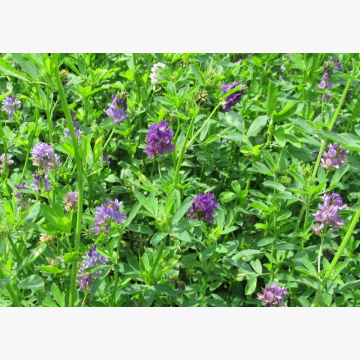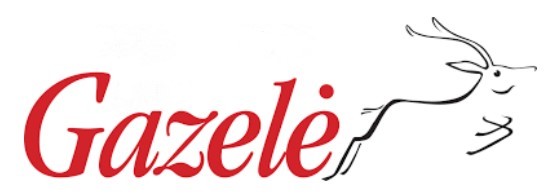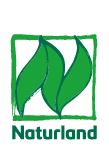- Home
- Seeds
- Catch/Cover crops
- Plants for catch/cover crops
- Alfalfa GEA (inoculated, coated)
FOR CONSULTATIONS APPLY TO:
Commercial director
Lina Smalskienė
tel. +370 618 02 551
e-mail linak@agrolitpa.lt
Sales manager
Tautvydas Kliučininkas
tel. +370 681 35 093
e-mail tautvydask@agrolitpa.lt
Sales manager
Eglė Petkevičienė
tel. +370 626 95 458
e-mail eglep@agrolitpa.lt
Sales manager
Kotryna Nakrošytė
tel.: +370 601 39 282
e-mail kotryna@agrolitpa.lt
Products
High yielding alfalfa with a high-quality forage with a high leaves/stem ratio, suitable for cooler climate
- Very high production potential
- Suited for a frequent cut management
- Very fast regrowth after each cutting
- Very early start up after winter
- High content in digestible proteins
- Good winterhardiness
- Adapted to a very extended cultivation area
- High yield potential
- High production per hectare
- Early spring re-growth (early fodder)
- Good yields even in dry years
- The plants are tall, erect, abundantly leafy
- Good leaf/stem ratio
- Flowering time – medium
- Suitable for frequent cutting
- Regenerates quickly after each cut
- Plants are very productive, 4-5 harvests are possible
- Winter hardiness – good
- Resistance to cold – high
- Resistance to diseases – high
- Resistance to drought – high
- Plants – 30-90 cm tall, with roots reaching up to 3 m or deeper
- A well-developed root system provides high resistance to summer heat and drought
- Alfalfa is suitable both for raw fodder for direct feeding and for hay, as it contains many nutrients and proteins, vitamins
- High amount of digestible proteins
- Fodder made from plants of this variety is well digestible
- Recommended for haymaking and hay production by drying
- Hay is mowed when plants are in full bloom
- To increase the energy value of the feed, you can combine alfalfa with grasses, which will balance the amount of protein and carbohydrates
- Good pre-crop because it enriches soil with nitrogen, potassium, calcium and phosphorus. It also significantly improves soil structure; the roots enrich the soil with organic matter
- Can be under-sown in barley crop
- Nectareous plants
- Fixes and accumulates nitrogen, needs less nitrogen for fertilization
- Yield (annual yield index in 5 locations with 5 harvests (2020) or 4 harvests (2021) – 5.7 points
- Quality – 3.3 points
- Development in early stages – 2.5 points
- Competitiveness – 4.2 points
- Persistence– 4.9 points
- Resistance/tolerance to winter cold – 3.9 points
- Resistance/tolerance to leaf diseases – 4.9 points
- Resistance/tolerance to alfalfa wilt – 2.5 points
- DOM (digestible organic matter) – 5.0 points
- Stability – 3.9 points
- Stem texture – 5.2 points
- Index – 4.19 points
**Source: 2019-2021 results of harvest studies and observations in Switzerland. Ergebnisse der Ertragserhebungen und Beobachtungen in den Jahren 2019 bis 2021 Luzerne: Zwei neue Sorten für den schweizerischen Futterbau empföllen | Pflanzenbau / Agrarforschung Schweiz 14: 1–7, 2023
- Yield – 4.0 points
- Germination speed – 2.8 points
- Regrowth in spring – 3.6 points
- Competitiveness – 4.3 points
- Persistence – 3.0 points
- Resistance to leaf diseases – 3.1 points
- Resistance to verticillium – 2.9 points
- Resistance to lodging – 6.0 points
- Plant height – 5.3 points
- Digestibility – 5.7 points
*According to French research (published in Recherche Agronomique Suisse 8 (1): 2017 p. 2)
The advantages of coated seeds:
- Allows more precisely to incorporate small size seeds with low sowing rate
- Protect seed from mechanic stress caused by sowing machines
- Protect seed from birds and insects - in fact coating components are not toxic but they don’t even attract them
- The extra-resistance of the coating avoids dust leakage and dust accumulation in the sowing machine
- Have less hard-seed content which means higher immediate germination percentage on the establishment of crop
The advantages of inoculated seeds:
- Rapid and safe establishment of the plant
- Plants have at their disposal high quantities of nitrogen fixed by the Rihizobia
- Saving in fertilization
- More productive plants
- High quality forage with maximum protein content in the plant
The varietal parameters may differ from those indicated here when the testing circumstances differ from quondam
Recommended sowing rate: 20-25 kg/ha, depth 0.5-1.0 cm
Recommended sowing rate when growing for green manure: 20-25 kg/ha
Keravos sreet. 17, Kerava,
LT-38 131 Panevėžys district, LITHUANIA
Enterprise's code 168598128
VAT code LT685981219
Tel. +370 615 11 315
E. mail info@agrolitpa.lt




.JPG)


